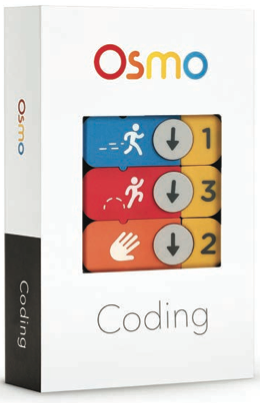At Play In The Space Between Digital and Real
With a passion for tangible digital design, Felix Hu ('14) moves from research to reality with a game that teaches kids to code.

Then, Data as Art happened.
A collaboration between Northwestern and the School of the Art Institute of Chicago (SAIC), this innovative course challenges students to translate complicated information into visual art or images for the masses.
For Hu, it also ignited a passion for tangible digital design and launched a journey that resulted in Osmo Coding, a recently released game that helps children learn the basic concepts of computer programming.
“The space between the tangible and the digital is such an interesting area to explore because there’s so much to discover,” Hu says.
While taking Data as Art during the summer prior to his senior year, Hu and SAIC student Ariel Zekelman began exploring different tangible design products. They continued their search after completing the course, and as Hu neared graduation, he contacted Mike Horn, associate professor of electrical engineering and computer science and leader of Northwestern’s Tangible Interaction Design and Learning Tangible Interaction Design and Learning (TIDAL) Laboratory, to inquire about ongoing projects.
“RESEARCH PROJECTS OFTEN START AND END IN THE LAB, SO IT’S BEYOND EXCITING TO HAVE RESEARCH COME TO LIFE AND BRING KIDS JOY.”
“I didn’t think [Professor Horn] would even reply to me,” Hu confesses.
But Horn did just that, eventually pulling Hu into Strawbies, a tangible design project focused on developing a game to teach elementary school children the building blocks of coding.
Working his day job at a consulting firm, Hu devoted nights and weekends to developing Strawbies. In the game, children play and learn by arranging encoded tiles in front of an iPad. The tablet’s camera perceives and interprets the physical tiles’ arrangement and, through Hu’s programming code, helps Awbie, a digital character on the screen, interact with his animated world.
Hu, Horn, and Zekelman, an industrial designer charged with the game’s tangible element, spent months exploring different approaches for the iPad app and the programming tiles. They also tested the game extensively with children, parents, and teachers to ensure it was inviting, open-ended, and engaging. Hu would often observe students at play one day, make tweaks that evening, and return the following day with an update.
Horn acknowledges, “Felix was the engine here, and he attacked the project with a drive and enthusiasm that made it happen.”

“It was great validation of our work,” Hu says.
Renamed Osmo Coding, the game, which blends digital and physical play, launched publicly in May 2016 and generated favorable press from no less than The Wall Street Journal and Forbes.
“It was an absolute whirlwind,” says Hu, who continues releasing new content for Osmo Coding while helping Tangible Play conceptualize new games.
Reflecting on the enthusiastic acceptance of the game by both children and their parents, Hu notes, “Research projects often start and end in the lab, so it’s beyond exciting to have research come to life and bring kids joy.”
